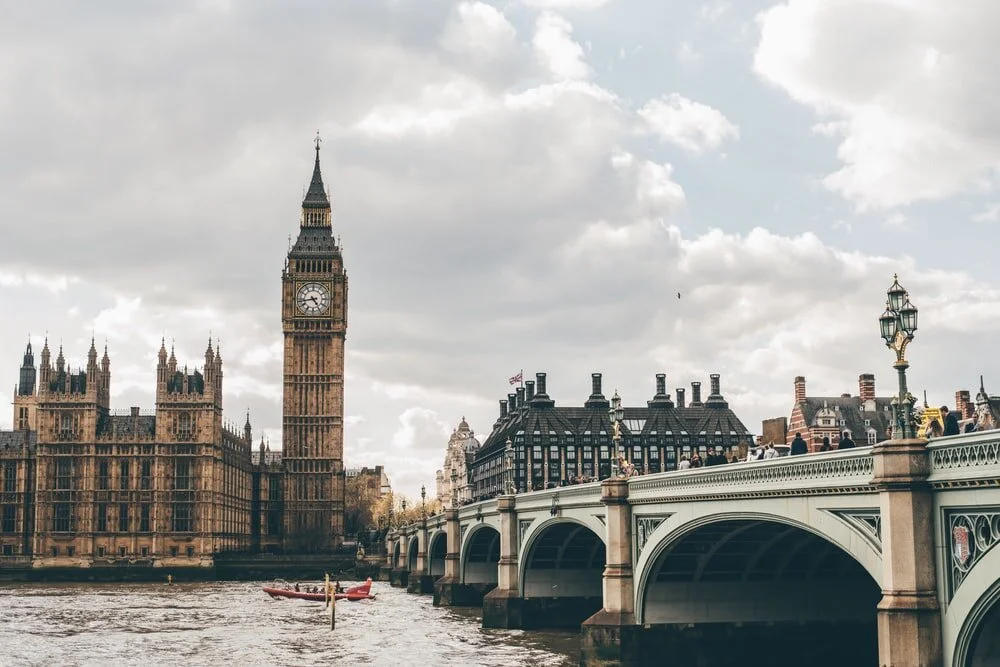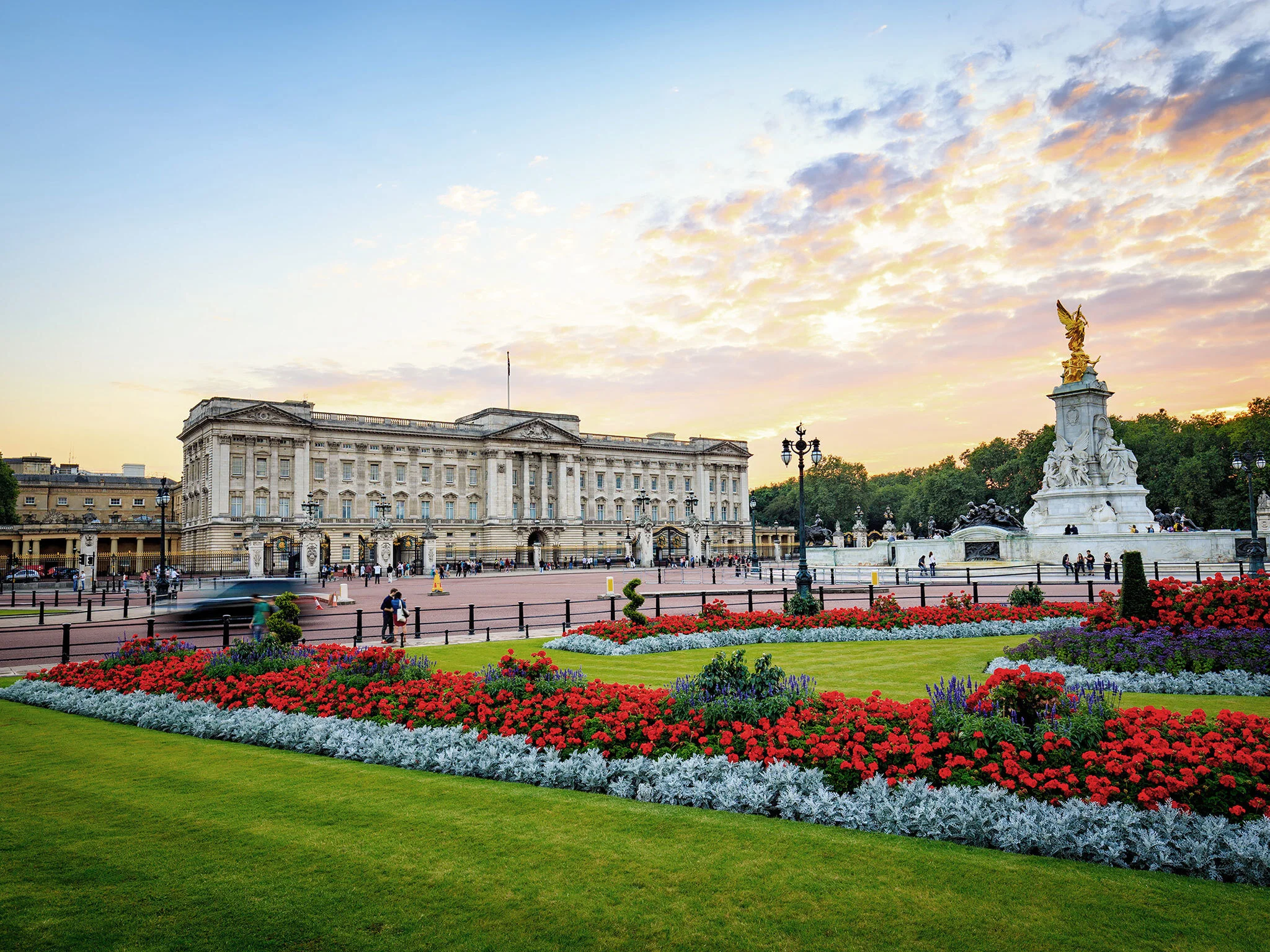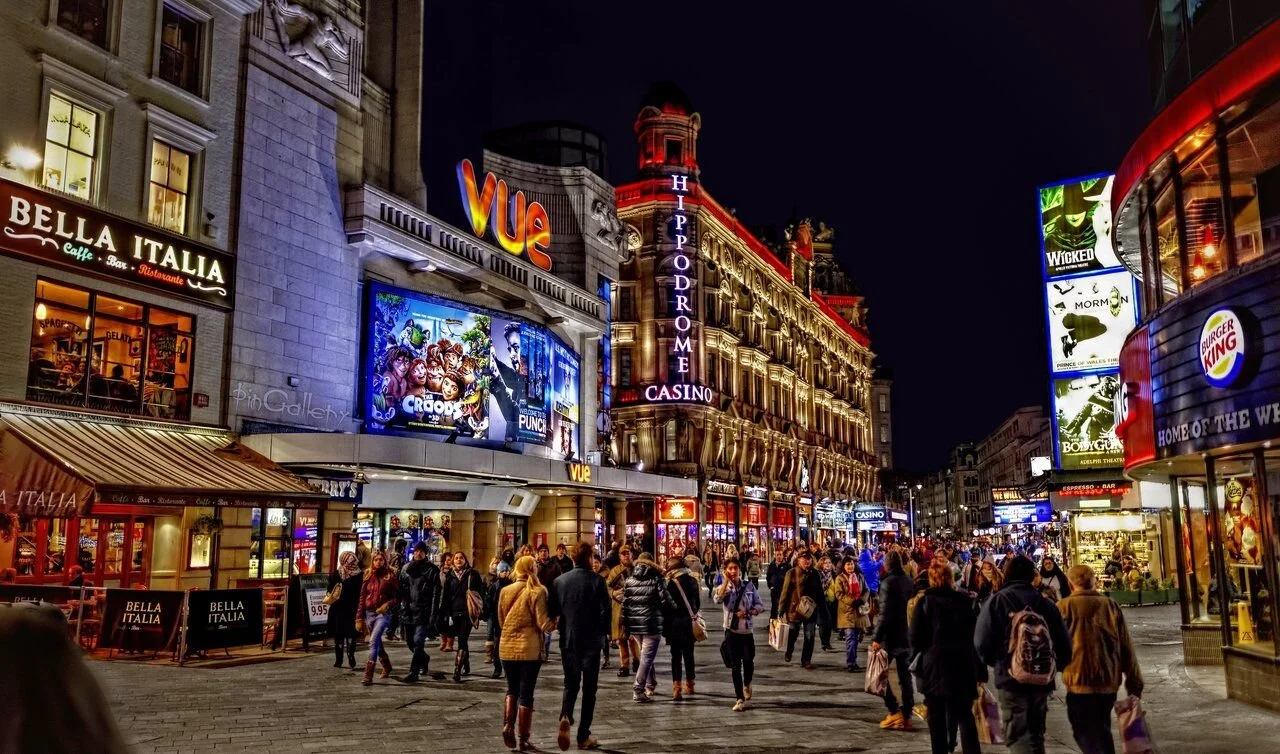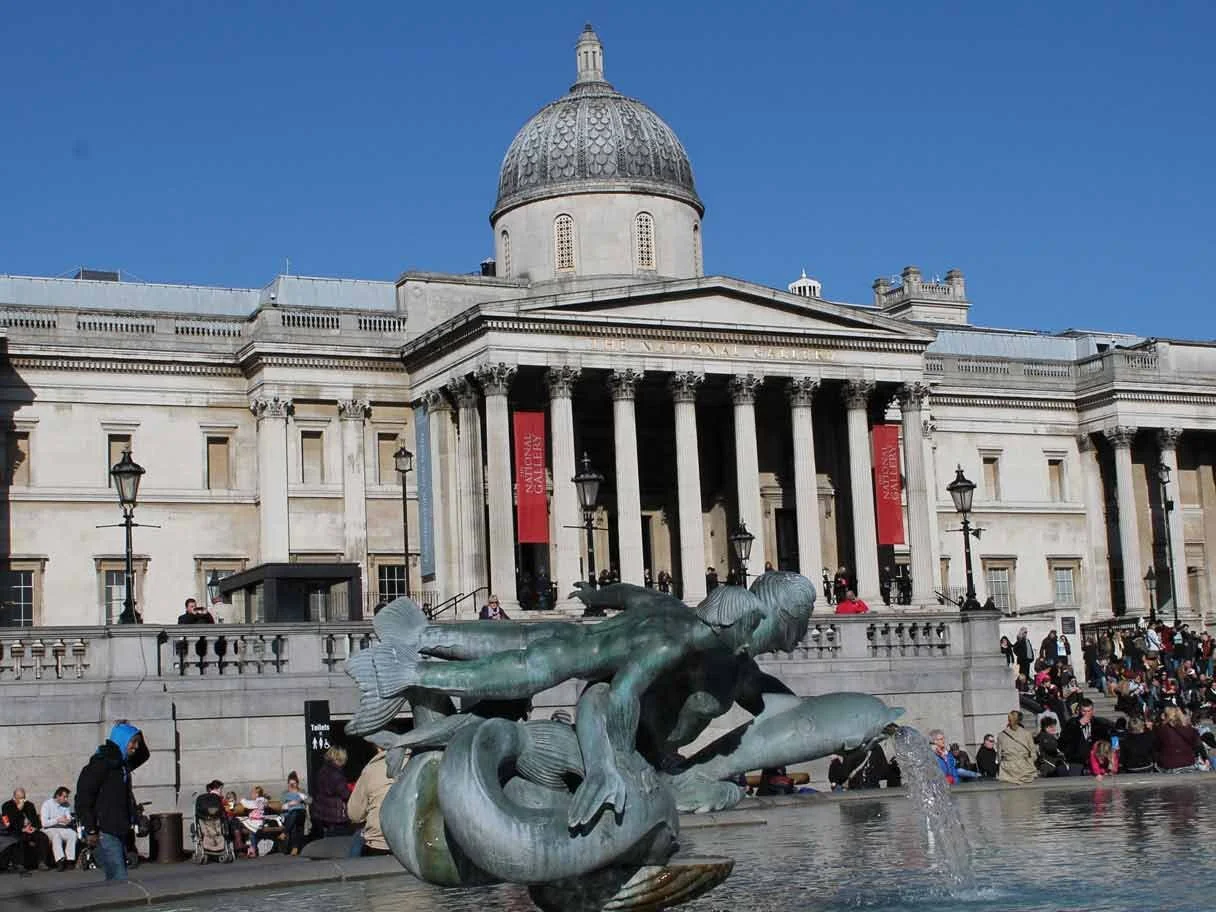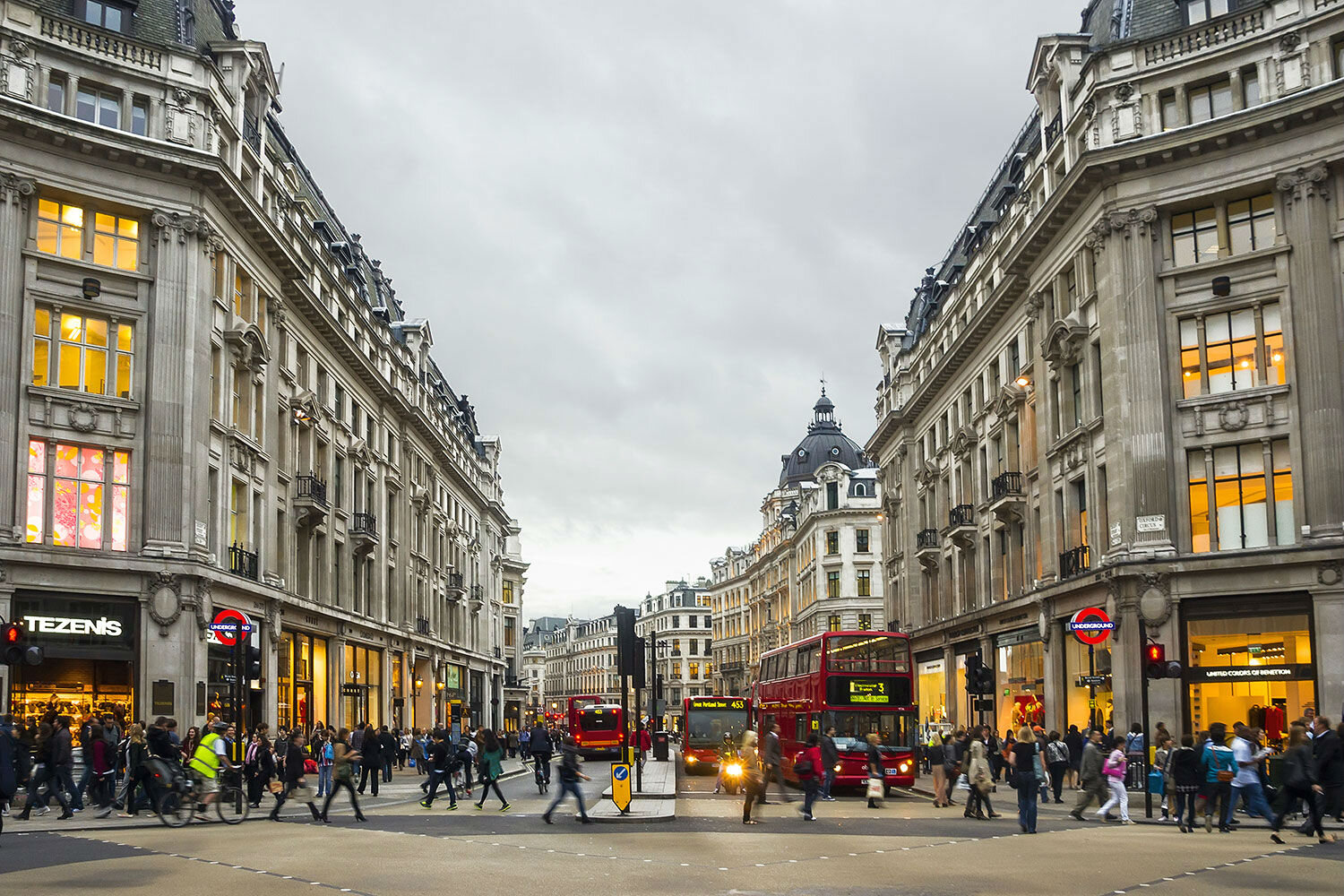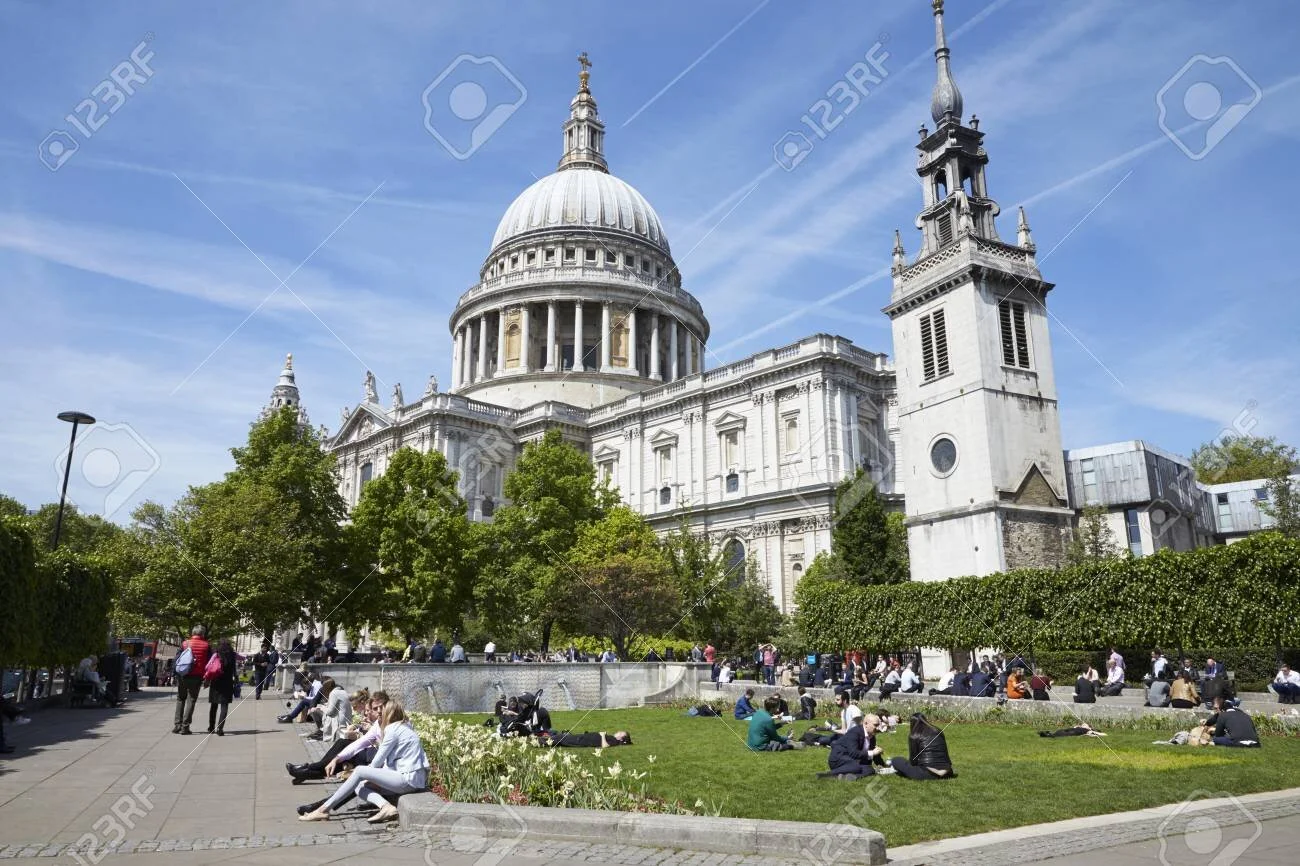
London Central
Big Ben and Houses of Parliament
Buckingham Palace
Theatre Land
National Gallery Trafalgar Square
West End Shopping
St. Paul's Cathedral
CITIES
Introduction:
London is the capital of the United Kingdom and lies on the River Thames in South East England. It consists of thirty two Boroughs and has a current population of 8,416,535.
Central London is generally considered to be the City of London, the City of Westminster, Royal Borough of Kensington and Chelsea and fringes of adjacent Boroughs, which is where most football fans who visit a London football club for the weekend will head.
Brief History:
City of London:-
The City has existed since approximately 47AD when the Romans settled on the north bank of the Thames, although some evidence exists that it may be older. After Boudica destroyed the town in 60AD a new walled city was built by the Romans, was named Londinium and took the title of Capital of Roman Britain, from Colchester.
The first bridge over the Thames was built in approx. 50AD near the site of current London Bridge.
Decline set in and continued rapidly after the Romans left and the City was attacked by Picts, Scots and Saxons. The Anglo Saxons started the restoration with King Alfred being very influential. After the Norman conquest the city was granted a charter in 1075 and a mayor was appointed in 1189.
The old city had two major fires, one in 1123 and the famous Great Fire of London in 1666. Whilst destroying much of the City, the latter did wipe out the remains of the recent plague. The Monument, built to remember the fire, was constructed close to the source of the fire in Pudding Lane. The fire was a chance for a rebuild London and included in the plans was a new St. Paul’s Cathedral designed by Christopher Wren. This was also a springboard for the City to become the major banking, financial, commerce and international trade centre. This lead to the need for the City to expand, which it did with the Port of London and industry to the east and towards the West End and Westminster in the west..
The population declined in the 19th and 20th Century as the workers moved to the suburbs and commercial activity took over the properties and land. The Square Mile, as the City is also sometimes referred as, was badly damaged by World War 2 blitz bombing but again this enabled the City to rebuild itself into the major World financial centre which it is to this day. Due to its major importance and now lack of space, many of the City’s banks and other financial institutions relocated to Canary Wharf, developed from part of the now defunct London docks.
The major buildings of the City include the Tower of London, Bank of England, Guildhall, Stock Exchange, Mansion House, St. Paul’s Cathedral and Tower Bridge.
City of Westminster:
To the west of the City of London was open countryside. Edward the Confessor, prior to William the Conqueror, built himself a palace in the fields and also a church, Westminster Abbey.
William was crowned in the Abbey in 1066 and since then every monarch, except Edward V and Edward VIII, was crowned there. Many monarchs have also been interned there.
William the Conqueror’s son William Rufus built Westminster Hall, where Charles I was tried in and Oliver Cromwell was made Lord Protector, both in the 17th Century.
Whitehall was the location of Whitehall Palace, which was owned by the Archbishop of York. Henry VIII confiscated the Palace and he also built St. James Palace at about the same time.
In the Middle Ages Westminster still had fields between itself and the City of London but they were joined by a shore or strand running along the bank of the Thames. The strand became the Strand and runs parallel to the old road a little further inland.
Eventually, in the 18th Century, the rich men of the City of London, began to build their houses westward and areas such as Covent Garden, Pall Mall, St. James Park and Green Park were established. Buckingham Palace, Marlborough House, Downing Street, Westminster Hospital, Horse Guards Parade and the Royal Academy soon followed.
Westminster’s modern area began in the 19th Century with the near destruction of Westminster Palace, which was replaced with the current Houses of Parliament and Big Ben designed by Charles Barry. From this point the City developed into the principal shopping, political, diplomatic, entertainment and cultural borough of London.
Things to Do:
(Please note that discounts for all attractions can be had if a London Pass is purchased). Also, this is only a fraction of what is on offer.
The Eye:
The London Eye was constructed to celebrate the millennium and is located on the south bank of the Thames opposite Westminster. Fantastic local and distant views can be seen from the pods. Tickets can be purchased on line or at the site.
Tower of London:
This castle and prison was built by William the Conqueror and throughout its history has housed traitors, enemies of the monarchy and state. The poor souls were then mainly executed here. The Crown Jewels are also housed here. Tickets can be bought at the entrance.
St. Paul’s Cathedral:
Designed by Christopher Wren, the current cathedral replaced the one that was destroyed in the Fire of London in 1666. It is possible to climb to the whispering gallery. Many famous people have been interned here. There is an entrance fee of £15 for adults and £6.50 for children, with a reduction for families and concessions. Tickets can be bought online.
Westminster Abbey:
A Norman building, it is the religious centre for the monarchy as most Royal coronations, weddings and funeral services are held here. There are various special areas such as Poets Corner within the Abbey.
The building is open to the public when no state services are taking place. The entrance fees are £20 for adults and £9 for children, with a reduction for families and concessions. Those in wheelchairs and their carers enter free.
Houses of Parliament:
Home of the parliament of the United Kingdom the Houses of Commons and Lords can be visited when parliament is not sitting. Visitors can take either a guided tour or guide themselves with the aid of audio equipment. The tour can be ended by taking afternoon tea on the terrace beside the Thames. There is a charge for tours but UK citizens can get a free tour via their member of parliament.
Buckingham Palace:
The London home of the British monarch since 1837.
Note this attraction is only open in August and September whilst the Queen is at Balmoral. Entrance fees are £20.50 for adults and £11.80 for children, with some concessionary prices. The tour takes in the State Rooms and garden.
There is a separate arrangement for visiting the Queen’s Art Collection. This is open all year. Both tours can be bought online.
The Monument:
Standing at the junction of Fish Street and Monument Street, in the City of London, and was built to commemorate the Great Fire of London of 1666.
It was designed by Christopher Wren and Dr. Robert Hooke and is 61m high, the exact distance from where the fire started in Pudding Lane.
Visitors have 311 steps to climb to the top and the charges are £4 for adults and £2 for children. It is open daily with last entrance at 5pm.
London Zoo:
This is the oldest zoo in the world, opened in 1828 for scientific purposes and then opened to the public in 1847. Located on the north side of Regents Park the zoo contains over 800 species and over 19000 creatures. Open every day, except Christmas Day, the approximate entry charges are £23 for adults and £17 for children.
River Thames:
Old Father Thames has been the life blood of London since the city was established. Flowing from the Cotswolds, in Gloucestershire, to the estuary at the North Sea, the river is the longest that runs in England alone.
The river is tidal between Teddington in west London and the estuary.
The river is well known for freezing in the winter in the Middle Ages and Dickens period. The industrial age saw massive docks built on both banks to the east of Tower Bridge, which after the mid 1950s, went into decline.
Today the river is used for pleasure and commuting. Water buses run to a regular time table through the London stretch of the Thames and pleasure cruises can be taken between Windsor in the west and Greenwich in the east.
Museums:
Being a top five city of the world it is inevitable that the metropolis would contain some of the world’s best museums, and it doesn’t disappoint.
Some, such as the British Museum, Victoria and Albert, Imperial War and Science Museum are free entry. Others worth considering include the Natural History, Churchill War Rooms, Transport Museum, London Film and Museum of London.
Art Galleries:
Visitors to London who enjoy art are spoilt. The National Gallery, The National Portrait Gallery, Tate Britain, Tate Modern and Saatchi are free entry. Others, including the Queen’s Gallery at Buckingham Palace, charge a modest entrance fee.
Parks and Squares:
For those who prefer the fresh air then a stroll through London’s parks is a treat. Regents Park, Hyde Park, Green Park, St. James Park are the central lungs of the city. Urban squares such as Trafalgar, Grosvenor and Berkeley offer interesting architecture and people watching.
Night Life:
Pubs, nightclubs, wine bars, speak easy bars, comedy, cabaret and burlesque, London has it all to suit all tastes, straight and gay.
A good night out can be found anywhere in London. The most visited area is the West End, particularly Soho, Leicester Square, Piccadilly Circus and Covent Garden enclaves.
As in any major city clubs open and shut and a new one comes along to replace them. Currently Fabric, XOYO, Koko, The Nest and Egg are setting the pace. A good gay night out can be found in Heaven, under Charing Cross Station. It is wise for visitors to check out Time Out and other listings...
Theatres:
Alongside Broadway in New York, the West End is the leading theatre land in the English speaking world. Currently, forty theatres are entertaining over 14 million theatre goers a year. Musicals, drama, ballet and opera can all be found to suit every taste. What’s On can be found in newspapers and London listings magazines. It is advisable that tickets are booked in advance.
Cinemas:
Leicester Square is the major cinema location in London, where major premieres are held. However, cinemas are located throughout the city showing blockbusters, cult films, film noir and art films. Whats On can be found in London listings.
Eating Out:
All the world’s cuisines are found in London. The West End is awash with restaurants, cafes, coffee houses and pubs. The quality is generally good and the best way to find what you are seeking is to wander the streets looking at menus. Prices can also vary a lot so care should be taken when making your choice.
Shopping:
Regent Street, Bond Street, Piccadilly and Oxford Street (the UK’s major “high street”) offer some of the best shopping in the world. These streets offer major department stores John Lewis, House of Fraser, Selfridges, Fenwick and Liberty . There is also Hamley, the toy shop, Fortnum and Mason, Burlington Arcade and of course budget and chain stores, to give everyone a massive choice.
Further west are the shopping hubs of Knightsbridge, Sloane Street and King’s Road, Chelsea. Here you find up market establishments such as Harrods, Harvey Nicholls, Peter Jones and major designer stores.
Accommodation:
There is no disguising the fact, hotels are expensive in central London. It is probably best for football fans to book into a budget national chain close to the stadium they will be visiting.
Transport:
London is a major national and international travel hub and there are many options for getting to and around the city.
Underground:
The world’s first underground system is still one of the largest in the world. Starting in Victorian times the network expanded between WW1 and WW2 due to the rapid suburban construction development. Within the city centre the lines connect all the main line terminuses. From these termini tube trains run to many of the football stadiums within London.
Bakerloo Line:
Runs from Elephant and Castle to Harrow and Wealdstone via Waterloo, Charing Cross and Marylebone mainline termini.
Central Line:
Runs from Epping to Ealing Broadway/West Ruislip via Liverpool Street mainline terminus.
Circle Line:
Runs from Westminster to Westminster via Victoria, Paddington, St. Pancras, King’s Cross, Liverpool Street, Cannon Street and Blackfriars mainline termini.
District Line:
Runs from Upminster to Wimbledon/Richmond/Ealing Broadway/Edgware Road via Cannon Street, Blackfriars, Victoria and Paddington mainline termini.
Hammersmith and City:
Runs from Barking to Hammersmith via Liverpool Street, King’s Cross, Euston and Paddington mainline termini.
Jubilee Line:
Runs from Stratford to Stanmore via London Bridge and Waterloo mainline termini.
Metropolitan Line:
Runs from Aldgate to Uxbridge/Amersham/Chesham/ Watford via Liverpool Street, King’s Cross, St. Pancras and Euston mainline termini.
Northern Line:
Waterloo, Charing Cross, London Bridge, Euston, King’s Cross and St. Pancras mainline stations.
Piccadilly Line:
Runs from Cockfosters to Heathrow Airport/Uxbridge via King’s Cross and St. Pancras mainline termini.
Victoria Line:
Runs from Brixton to Walthamstow Central via King’s Cross, St. Pancras, Euston and Victoria mainline termini.
Waterloo and City Line:
Runs from Waterloo to Bank via Waterloo mainline Terminus.
London Dock Railway:
With many of the companies in the City of London relocating to Canary Wharf, plus other developments in Dockland, additional transport facilities were required. Thus, the LDR came into being. The lines start at Bank and Tower Gateway in the west and run to Stratford, Beckton,
Woolwich Arsenal and Lewisham in the east. An extension to Dagenham is planned.
Buses:
London’s red buses are a British icon and known throughout the world. There is an inner city network linking to the suburban systems. Most of the routes pass by or terminate at the London mainline stations.
Coach:
From Victoria Coach Station, National Express and other companies run an extensive coach route system throughout the UK.
River:
As mentioned above there is a water bus system running along the Thames. This can be a more interesting and speedier means of transport in some circumstances.
Railway:
London has one of the most concentrated suburban rail systems in the world, working in conjunction with the national rail network. Football fans travelling to London for matches would use the following termini.
London Bridge………….South and South East.
Charing Cross and Blackfriars…………..South and South East
Victoria…………….South Coast.
Waterloo………….South West.
Paddington………..West, South West and Wales.
Marylebone……………South Midlands
Euston…………………Midlands and North West and West Scotland.
St. Pancras…………….East Midlands and Eurostar to South East.
Kings Cross……………East Midlands, North East and Scotland.
Liverpool Street…………..East Anglia.
Fenchurch Street…………South Essex.
Taxis:
London’s famous black cabs operate throughout the city centre and suburbs and run to and from the London Airports.
Air:
Heathrow, Gatwick, Stansted and City Airports have major national and international routes and connected to the city centre by either train, coach or taxis.
CLUBS
Chelsea
Introduction:
The football club is based in the London Borough of Hammersmith and Fulham which is an inner London Borough and lies on the north bank of the River Thames. This is the only Borough in the country that is home to three different football clubs. The current population is 182,400.
Transport in the Borough:
Buses:
About 45 bus routes run through the Borough, serving the Borough itself and local surrounding areas. Other than central London, buses connect to Clapham, Putney, Twickenham, Willesden, Southall and Uxbidge. There are also five night buses running from central London.
Full timetables and information are available at Transport for London.
Underground:
Ten stations serve the Borough:-
Hammersmith on the District, Hammersmith & City and Piccadilly lines.
Fulham Broadway on the District Line.
Shepherd’s Bush on the Central Line.
Earl’s Court on the District and Piccadilly Lines.
White City on the Central and Hammersmith & City Lines.
Ravenscourt Park on the District Line.
East Acton on the Central Line.
Parson’s Green on the District Line.
Latimer Road on the Hammersmith & City Line.
Barons Court on the District and Piccadilly Lines.
Road:
The main road through the Borough is the A4 from Oxford Circus through to Reading, Bath and Bristol.
Also running east to west is the A40 from Marylebone/ Paddington which eventually becomes the M40 to Oxford and Birmingham.
The main south to north road, the A3320, runs from the Thames through Earls Court and on to the A40.
Railway:
The only mainline route is the Southern service from Clapham Junction to Watford Junction via Imperial Wharf, West Brompton and Kensington Olympia which lie in the Borough.
Air:
Heathrow Airport lies west of the Borough and is accessed via the A4 or by the Piccadilly underground line. Gatwick can be accessed by the Southern Rail Service via Clapham Junction.
Taxis:
Ten companies run services in Hammersmith and Fulham.
Stadium: Stamford Bridge. Fulham Road. London. SW6 1HS
Founded: 1905
Joined League: 1905
Chairman: Bruce Buck
Manager: Mauricio Pochettino
Current League: Premier
Phone Number: 0207 958 2190
Email: see official web site
Brief History:
Chelsea were formed to compete in the Football League. Initially they applied to join the Southern League, but were rejected. They then turned to the Football League and were surprisingly accepted to join Division 2, thus being formed and entering League in same year.
After two seasons the club was promoted to Division One where they remained until 1910 when they were relegated but promoted again in 1912. They were then relegated and promoted again pre WW2. During this period the Blues had been runners up once and reached the semi finals three times in the FA Cup.
Post war the club ambled along in the top flight and then, under Ted Drake, won the League Championship in 1955, which was followed by winning the Charity Shield the following season. Seven years later they were relegated again but bounced back at the first attempt. Then in 1965 the first major cup win, the League Cup followed by their first FA Cup win in 1970.
This win in turn led to European football and the European Cup Winners Cup was picked up the next season. In the League the club was to experience more relegations and promotions between 1975 and 1989. From this last promotion the fortunes of the club took off with multiple League and Premier League Championships and domestic and European cup success.
To achieve all this success it meant big personalities were employed by The Blues. The ownership passed from Ken Bates to Roman Abromavich and managers including Ruud Gullit and Jose Mourinho contributed enormously to the emergence of the club to a super club. The club is currently playing in the Premier League.
The club gained a place in Europa League at end of 2017/18 season and also won the 2018 FA Cup by beating Manchester United in the final.
At the end of season 2018/19 the club won the Europa Cup by beating Arsenal in Baku.
In August 2023 the Blues paid a British record of £115 million to Brighton and Hove Albion for mid-fielder Moises Caicedo.
Honours:
League Champions:
1955. 2005. 2006. 2010. 2015. 2017
FA Cup Winners
1970. 1997. 2000. 2007. 2009. 2010. 2012. 2018.
League Cup Winners:
1965. 1998. 2005. 2015.
Charity Shield Winners:
1955. 2000. 2005. 2009.
European Cup:
2012. 2021
Cup Winners Cup:
1971. 1998.
Europa Cup:
2013. 2019
UEFA Super Cup:
1998.
World Club Champions:-
2022
Match Day:
Tickets:
Away fans should contact their own clubs regarding tickets.
Generally tickets are put on sale 6 weeks before a home match. Initially members and season ticket holders have first opportunity and then they are put on general sale three weeks later. The ticket office can be contacted by phoning 0871 984 1905 or by email by using the official web site.
Transport:
Bus:
Routes 14, 211 and 414 stop outside the stadium and routes 11, 22, 28, 295 and C3 stop nearby in Fulham Broadway. Full details available from Transport for London web site.
Underground:
The nearest tube station is Fulham Broadway on the District Line which is 400 metres from the ground.
Rail:
Trains from Clapham Junction to Watford Junction stop at West Brompton, a ten minute walk, and Imperial Wharf, a fifteen minute walk away.
Car:
There is no parking at Stamford Bridge, so public transport should be used.
Stadium:
Stamford Bridge was built in 1877 and taken over by Chelsea in 1905. This is the only ground the club has occupied during its history. The current capacity is 41,798 but in the past a record attendance of 82,905 was achieved in 1935. It has been a venue for England Internationals and FA Cup finals and Charity Shield matches.
Various locations have been mooted to which the club could relocate but this is probably not an option in the short term. The four stands are as follows:
Matthew Harding Stand is a two storey structure on the north boundary. This is occupied by home fans.
East Stand is three tiered and contains the dressing rooms, dug outs, executive suites etc. and is for home fans.
Shed End was the traditional standing area for the clubs vocal fans until it was redeveloped into an all seater stand. Half of the stand is allocated to away fans and the Centenary Museum and Memorial Wall are also located here.
West Stand. With a capacity of 13,500 this is The Bridge’s largest stand. This is the first stand seen as you enter the site of the stadium and contains six hospitality suites, all named after club legends.
The stadium also contains a super store and tours of the ground can be booked. Contact the club for further information.
The refreshment areas for away fans are modern, contain TVs, and sell a good selection of, if pricey, food and drink. Local pubs are generally for home fans and so it is suggested that bars in Earls Court or King’s Road areas are better suited for away fans.
